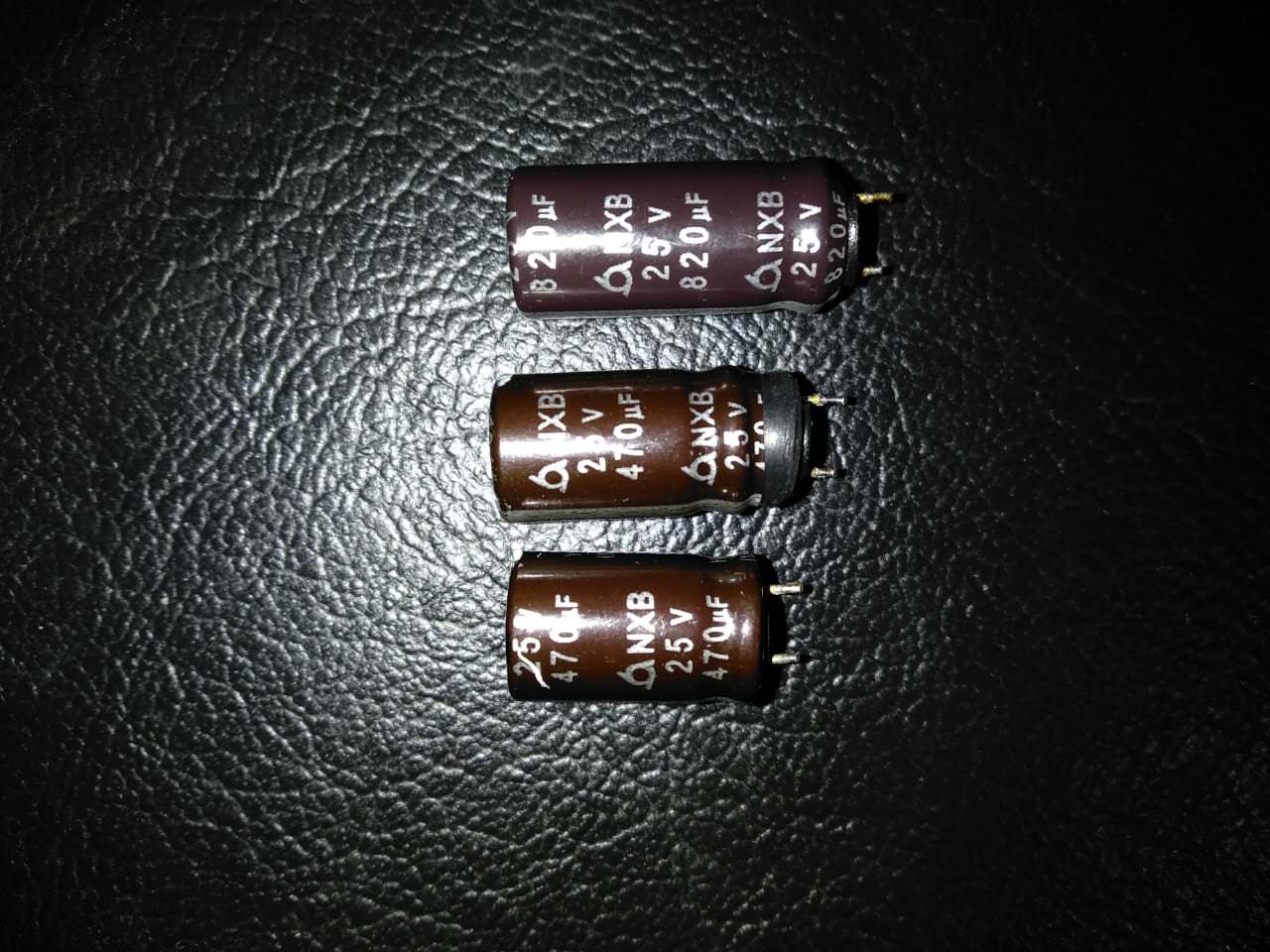I have a Samsung P2770H monitor, the power supply is an external one, 14v 3.5amps.
I was having this issue where the monitor would turn off and back on after 1-2 seconds, some days it would work fine, some days it would do it a lot of times. Mostly happened when watching videos full screen, but also a few times when just browsing a website or coding in a virtual machine.
Anyway, since the psu is external I said what the heck lets open it, and found these:

Two were a bit swollen and had the rubber seals pushed out, the other looked fine but I replaced it anyway. I replaced a 820uf 25v with a 1000uf 36v because I couldn't find the 820uf anywhere, and since these caps have a tolerance of like +/- 20% I thougth it would be ok, and two 470uf 25v with the same, all with same temp rating.
I thought this would fix the issue but the monitor would still occasionally turn off and back on by itself. So I opened it again and removed the two heatsinks, one with a rectifier diode (Y2010DN) and a mosfet (FQP 8N6OC), to remove some of the white adhesive and have a better look.

I didn't find anything wrong visually so I put it back together, but before doing that, I removed the diode and mosfet from the heatsinks (for some reason I still don't know). In that process, I broke (what I now know are) the insulation pads. I thought it was just for thermal conductivity so I replaced it with some cpu grease. And when I plugged it in, a spark noise and some smelly smell came out of it. Now it's dead.
Lesson learned. I'm going to buy a new one but may want to try to repair it some day to use for leds, an arduino project or something.
I have two questions:
1) Could I be so lucky that only the rectifier diode broke and replacing that would make it "work" again? (with the same issue I described at the beggining of the monitor turning off/on itself)? Or it is likely other components went down? Nothing looks burnt visually, the smell went away in seconds and the board has no visible marks. The spark was in the 220v plug.
2) Is there a component in these switching power supplies that normally causes the issue I described at the beggining?
I was having this issue where the monitor would turn off and back on after 1-2 seconds, some days it would work fine, some days it would do it a lot of times. Mostly happened when watching videos full screen, but also a few times when just browsing a website or coding in a virtual machine.
Anyway, since the psu is external I said what the heck lets open it, and found these:
Two were a bit swollen and had the rubber seals pushed out, the other looked fine but I replaced it anyway. I replaced a 820uf 25v with a 1000uf 36v because I couldn't find the 820uf anywhere, and since these caps have a tolerance of like +/- 20% I thougth it would be ok, and two 470uf 25v with the same, all with same temp rating.
I thought this would fix the issue but the monitor would still occasionally turn off and back on by itself. So I opened it again and removed the two heatsinks, one with a rectifier diode (Y2010DN) and a mosfet (FQP 8N6OC), to remove some of the white adhesive and have a better look.
I didn't find anything wrong visually so I put it back together, but before doing that, I removed the diode and mosfet from the heatsinks (for some reason I still don't know). In that process, I broke (what I now know are) the insulation pads. I thought it was just for thermal conductivity so I replaced it with some cpu grease. And when I plugged it in, a spark noise and some smelly smell came out of it. Now it's dead.
Lesson learned. I'm going to buy a new one but may want to try to repair it some day to use for leds, an arduino project or something.
I have two questions:
1) Could I be so lucky that only the rectifier diode broke and replacing that would make it "work" again? (with the same issue I described at the beggining of the monitor turning off/on itself)? Or it is likely other components went down? Nothing looks burnt visually, the smell went away in seconds and the board has no visible marks. The spark was in the 220v plug.
2) Is there a component in these switching power supplies that normally causes the issue I described at the beggining?

 But today, I’m making an exception here. Why? No idea. Perhaps only because the repair details are still “fresh” in my head… which is ironic, given this is a 16 year old monitor that hardly anyone will care about today. It is new to me, though.
But today, I’m making an exception here. Why? No idea. Perhaps only because the repair details are still “fresh” in my head… which is ironic, given this is a 16 year old monitor that hardly anyone will care about today. It is new to me, though.
Comment